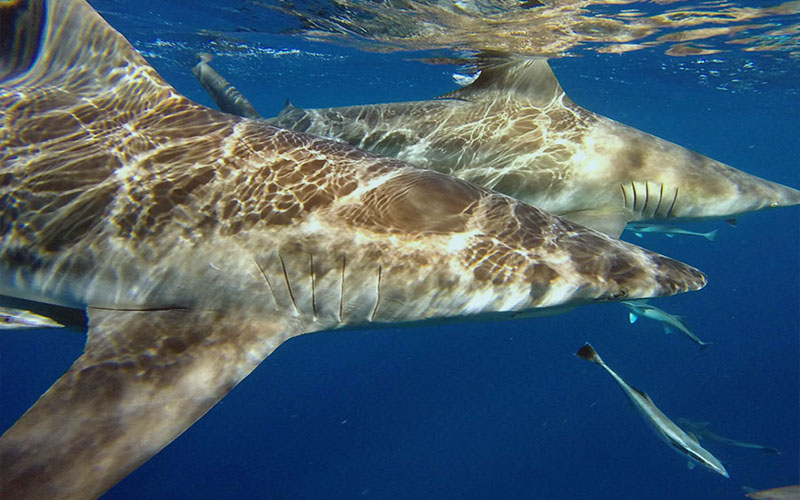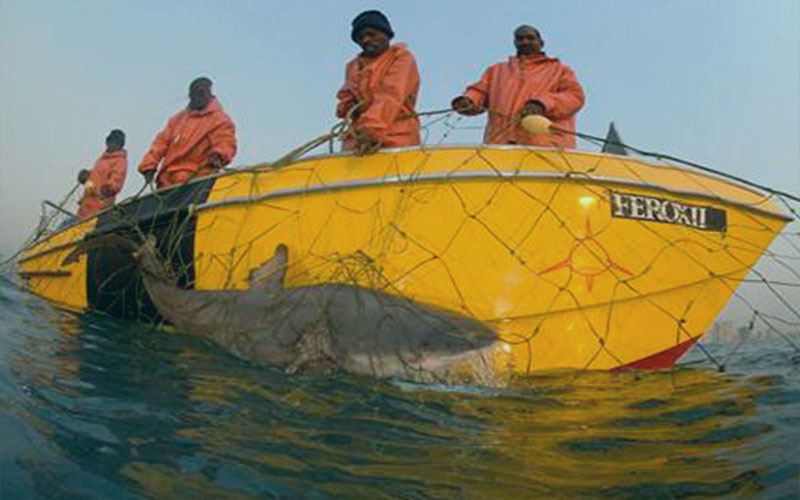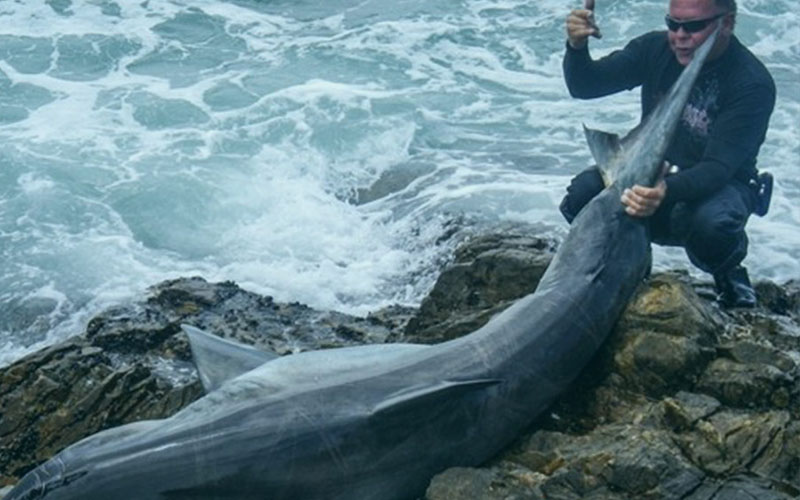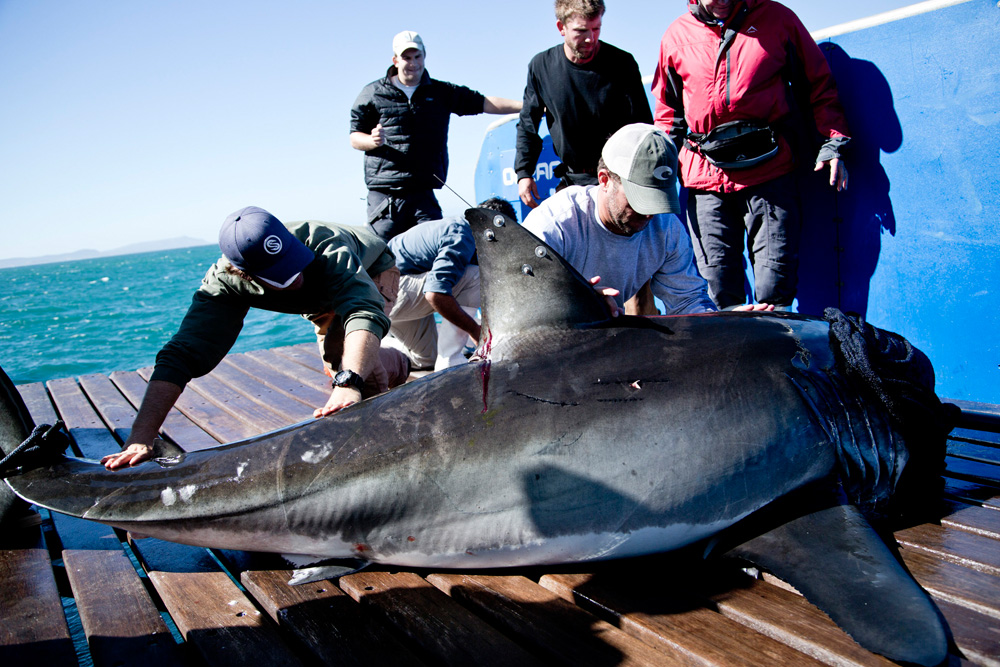Sharks remain one of the least understood, yet fascinating, taxa in the animal kingdom. Over the past decades, I have dedicated my life to revealing the hidden lives of the world’s shark populations by using innovative research techniques, sophisticated scientific equipment, duck tape, cable ties, and lots of shark chum. Today, my research focus centres on applicable science that can result in tangible benefits for the state of the world’s shark populations.

Marine Research Interests
Non-invasive population assessments
Non-invasive mark-recapture techniques using photographic identification can be used to gain deep insights into the population dynamics of the world’s shark species.
My current research is focused on using various biological markers that can enable the long-term identification of individual sharks. In great white sharks, we focus on the dorsal fin notch pattern and pigmentation pattern on the caudal (tail) fin for this purpose.
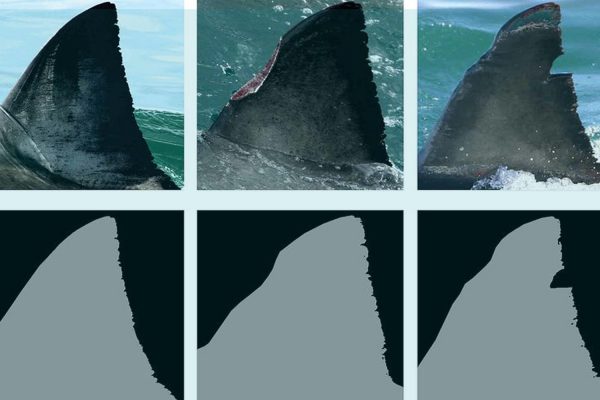
Marine Ecotourism Impact Assessments
Shark ecotourism and diving remains controversial activity. On the one hand, it represents a powerful tool to destigmatise sharks through direct education and awareness, on the other hand, it can represent unethical harassment of sharks and potentially augment the danger sharks represent to humans.
Understanding the ecological and safety impact of this activity is vital to ensure the correct management of sharks and shark ecotourism. Currently my research focus is on establishing impacts of shark ecotourism on both shark and human populations at worldwide shark diving sites, and establishing protocols and methodologies to ensure this activity is conducted in an ecologically and socially responsible manner.

Animalborne acoustic and satellite telemetry
Animal borne telemetry is the most potent method scientists have at describing small and large scale movements of animals. Tracking sharks via satellite and acoustic (sound) telemetry equipment is a powerful technique to produce knowledge on migratory pathways, habitat use, home ranges and population/stock sizes of sharks worldwide.
In recent years, my research focus is on using large-scale telemetry datasets to overlay fishing efforts with shark distribution to determine the vulnerability of sharks to national and international fishing pressures.

Telemetry is the field of tracking animal movement at a distance. My behavioural research on sharks is focused on acoustic and satellite telemetry in a number of countries throughout the world
Shark Attack Mitigation Technology
Shark attacks remain one of the most significant hurdles preventing sharks from gaining widespread public support for their conservation. Innovative, affordable and non-invasive methods to deter sharks from biting or attacking humans has the potential to redefine the broad-public perception of sharks.
My research interest in shark attack deterrents is focused on affordable and user-friendly technologies suitable to integrate into existing equipment utilised by ocean users.

Non-invasive measures to protect humans from sharks can contribute to the conservation of sharks. My research involves developing and testing various shark deterrents technologies on large, potentially dangerous, shark species at different selected sites around the world
Predatory prey game theory
T he ecological importance of understanding game theory and the evolution of predator-prey behaviour games is of critical importance in understanding the functioning of ecological systems and the consequences to species should drastic changes occur within such systems. Sharks typically represent the upper regions of the marine food chain (apex predators) and as such, can have a significant impact on the functioning of marine ecosystems.
My interest in predator-prey games revolves around the behavioural strategies utilised by sharks and prey species to maximise predatory success and survivability. Of particular interest is the dynamics between white sharks and various seal and fur seal species. In addition, the recent occurrence of Orca hunting great white sharks in South Africa is of significance due to the knock-on effect that dispersing white sharks has on local ecosystems.

Evaluation of predator prey relationships between sharks and potential prey species. Determined via observational studies, stomach content analysis and stable isotope analysis.
Genetic analysis
The power of genetic research is only just being realised by the scientific community. Partnering with the world’s top genetic scientists, my genetic focus is currently on utilising Environmental DNA (eDNA) to detect and monitor the presence and absence of sharks and marine life in water bodies via detecting minute amounts of genetic material shed from ocean creatures as they move through their environment.
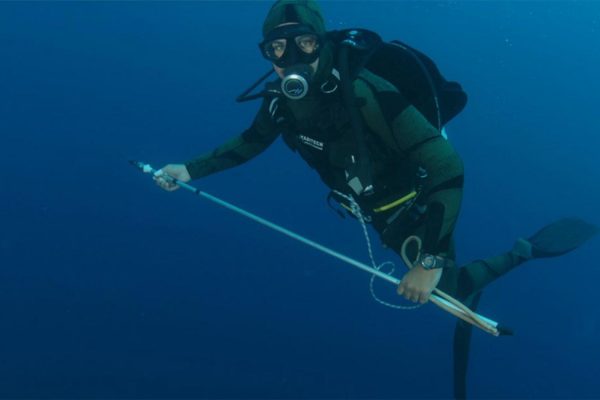
Genetic, environmental DNA, and stable isotope studies are used to reveal stock structures, feeding habitats, and the interconnectedness of stocks within a species.
Research & Conservation Highlights

The Gloworm Network is a community-driven online network for natural history media experts and enthusiasts. The community encompasses biologists, filmmakers, photographers, communicators, podcasters, journalists and more. Supercharge your career by Joining Gloworm today.
Academic Publications
- Global spatial risk assessment of sharks under the footprint of fisheries. (Nature) Queiroz, Humphries, … Johnson …. Sims (2019) Read this publication
- Cape fur seals adjust traversing behaviour with lunar conditions in the high white shark density waters of Mossel Bay, South Africa. Morse, Mole, Bester, Johnson, Scacco, Gannari (2019)
- Performance and reliability of active acoustic biotelemetry to best track marine pelagic species in temperate coastal waters. Genneri, Johnson, Cowley (2018) Read publication online
- Antibiotic sensitivity of bacterial flora isolated from the oral cavities of live white sharks (Carcharodon carcharias) in South African waters. Jennari, Kock, Smale, Towner, Khan, Bester, Johnson, Fischer, Meÿer, Morse (2019)
- Spatial and seasonal patterns in sighting rate and life-history composition of the white shark Carcharodon carcharias at Mossel Bay, South Africa. Ryklief, Pistorius, Johnson (2014) – Download this publication
- Fine scale movements and activity areas of white sharks (Carcharodon carcharias) in Mossel Bay, South Africa. Jewell, Johnson, Gennari, Bester (2013) – Download this publication
- Accuracy of Using Visual Identification of White Sharks to Estimate Residency Patterns. Delaney, Johnson, Bester, Gennari (2012) – Download this publication
- Effects of Smart Position Only (SPOT) Tag Deployment on White Sharks Carcharodon carcharias in South Africa. Jewell, Wcisel, Gennari, Towner, Bester, Johnson, Singh (2011) – Download this publication
- Distribution and abundance of humpback whales, Megaptera novaeangliae, off the coast of Mozambique. Findlay, Meyer, Elwen, Kotze, Johnson, Truter, Uamusse, Sitoe, Wilke, Kerwath, Swanson, Staverees, Van Derwesthuizen (2011) – Download this publication
- Impact of shark-feeding tourism on surrounding fish populations off Moorea Island (French Polynesia). Vignon, Sasal, Johnson, Galzin (2009)
- Coastal swimming patterns of white sharks (Carcharodon carcharias) at Mossel Bay, South Africa. Johnson, Bester, Dudley, Oosthuizen, Meÿer, Hancke, Gennari (2009) – Download this publication
- Concordance of genetic and fin photo identification in the great white shark, (Carcharodon carcharias), of Mossel Bay, South Africa. Gubili, Johnson, Gennari, Oosthuizen, Kotze, Meÿer, Sims, Jones, Noble (2009) – Download this publication
- Encounters between white sharks and Cape fur seals in a shallow channel. Johnson, Keswick, Bester, Oosthuizen (2008) – Download this publication
- Seabird predation by white shark, Carcharodon carcharias and Cape fur seal, Arctocephalus pusillus pusillus at Dyer Island. Johnson, R.L., Venter, A., Bester, M.N., & Oosthuizen, W.H. (2006) South African Journal of Wildlife Research 36(1): 23-32.
- White shark abundance: not a causative factor in numbers of shark bite incidents. Kock, Johnson, Bester, Compagno, Cliff, Dudley, Gennari, Griffiths, Kotze, Laroche, Meyer, Oosthuizen, Swanson (2006) – Download this publication
- Seabird predation by white shark, (Carcharodon carcharias), and Cape fur seal, (Arctocephalus pusillus pusillus), at Dyer Island. Johnson, Venter, Bester, Oosthuizen (2006) – Download this publication
- Is there a relationship between white shark presence and the management of city estuaries and river mouths? Oelofse, Kock, Johnson, Haskins (2006) – Download this publication
- South Africa’s White Shark cage-diving industry – is their cause for concern? Johnson, Kock, Bester, Compagno, Dudley, Griffiths, Keswick, Kotze, Laroche, Meyër, Oosthuizen, Swanson, Jacobs (2006) – Download this publication
- Transoceanic migration, long-distance return migration and local movement patterns in the great white shark. Bonfil, Meyer, Scholl, Johnson, O´Brian, Oosthuizen, Swanson, Kotze, Patterson (2005) – Download this publication
- Habitat utilization of the white shark in South Africa, using acoustic telemetry. Johnson, Oosthuizen, Bester, Meyer, Swanson, Kotze (2004)
- Behavioural ecology of the white shark (Carcharodon carcharias) at Dyer Island, South Africa. Johnson (2003)
- Rodent induced damage to a pine plantation: a southern African case study. Ferguson, Van Jaarsveld, Johnson, Bredenkamp, Foord, Britz (2003)
- The effect of afforestation fragmentation on small mammal assemblages at Groenvaly grasslands. Johnson, Ferguson, Van Jaarsveld, Chimimba, Bronner (2002)
- Impact of Cage diving on the Ecology of Dyer Island. Johnson, R., Oosthuzien, W.H. and Bester, M. (1999) Proceedings of International association for Impact assessment (SA affiliate) 1999.
Shark Research Unit
My official institutional affiliation is the Blue Wilderness Shark Research Unit. To learn more about the unit and our research, visit the units website

